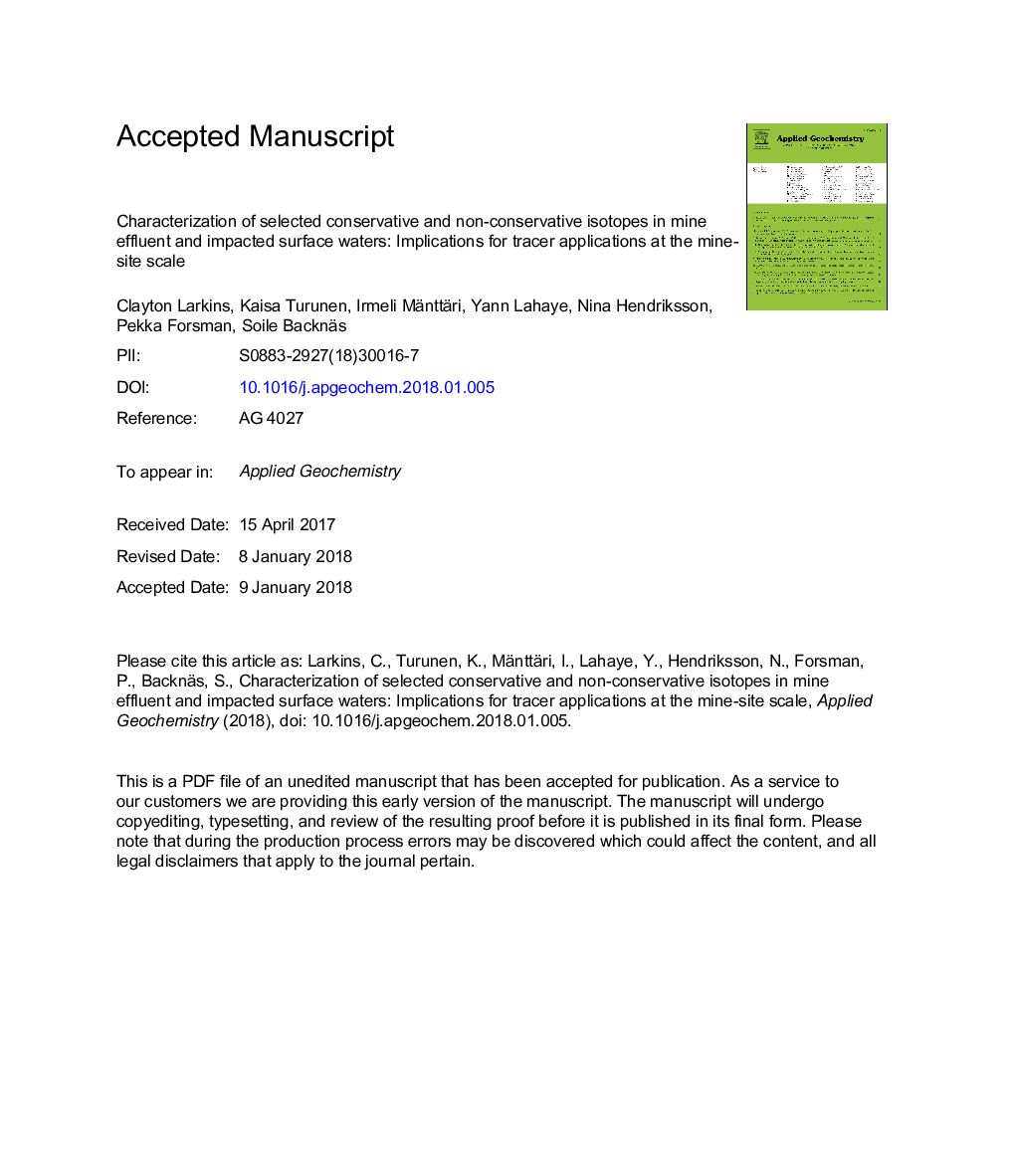| Article ID | Journal | Published Year | Pages | File Type |
|---|---|---|---|---|
| 8863144 | Applied Geochemistry | 2018 | 33 Pages |
Abstract
Effluent from Europe's largest active gold mine is discharged to the adjacent River Seurujoki via natural treatment wetlands in Lapland Finland. Site waters, including two sources of mine effluent, treatment wetland surface water and Seurujoki river water were chemically and isotopically characterized. The results of isotopic characterization were evaluated to determine the effectiveness of selected environmental conservative isotopes (δ18O, δD,87Sr/86Sr) as tracers of water/solute source. Non-conservative isotopes (δ7Li, δ26Mg, δ25Mg, δ34SSO4) were evaluated as tracers of fractionation inducing processes that provide insight to contaminant attenuation and mobility mechanisms. The two sources of mine effluent were chemically distinct, and the impacts of mine effluent were persistent in downstream river water to at least 12.8â¯km. Sr isotope-based estimates of mine effluent discharge to the river were in good agreement with Cl concentration-based estimates, and suggest effluent comprised approximately 4% of river discharge in both June 2013 and June 2015. These instantaneous mixing results were applied in a multi-isotope approach to characterize non-conservative solute and isotopic behavior for Li and SO4. In 2015 7Li was enriched in downstream river water by approximately 3â° with no discernible concentration change, suggesting ongoing in-stream ion exchange reactions with oxy-hydroxide precipitates. While SO4 was attenuated by over 50% in the downstream direction, the observed 34SSO4 depletion indicates that bacterial sulfate reduction was not a driver of in-stream attenuation. Further, depletion of 18O and deuterium in treatment wetland 4 indicated that fresh meteoric water comprised approximately 25% of the treatment wetland discharge in March 2015. The contemporaneous flushing of numerous contaminants (Na, Ca, Mg, SO4, Mn, and Li) from the wetland supports the conceptual model in which disruption of contaminant concentration gradients will lead to contaminant leaching from the wetlands.
Related Topics
Physical Sciences and Engineering
Earth and Planetary Sciences
Geochemistry and Petrology
Authors
Clayton Larkins, Kaisa Turunen, Irmeli Mänttäri, Yann Lahaye, Nina Hendriksson, Pekka Forsman, Soile Backnäs,
